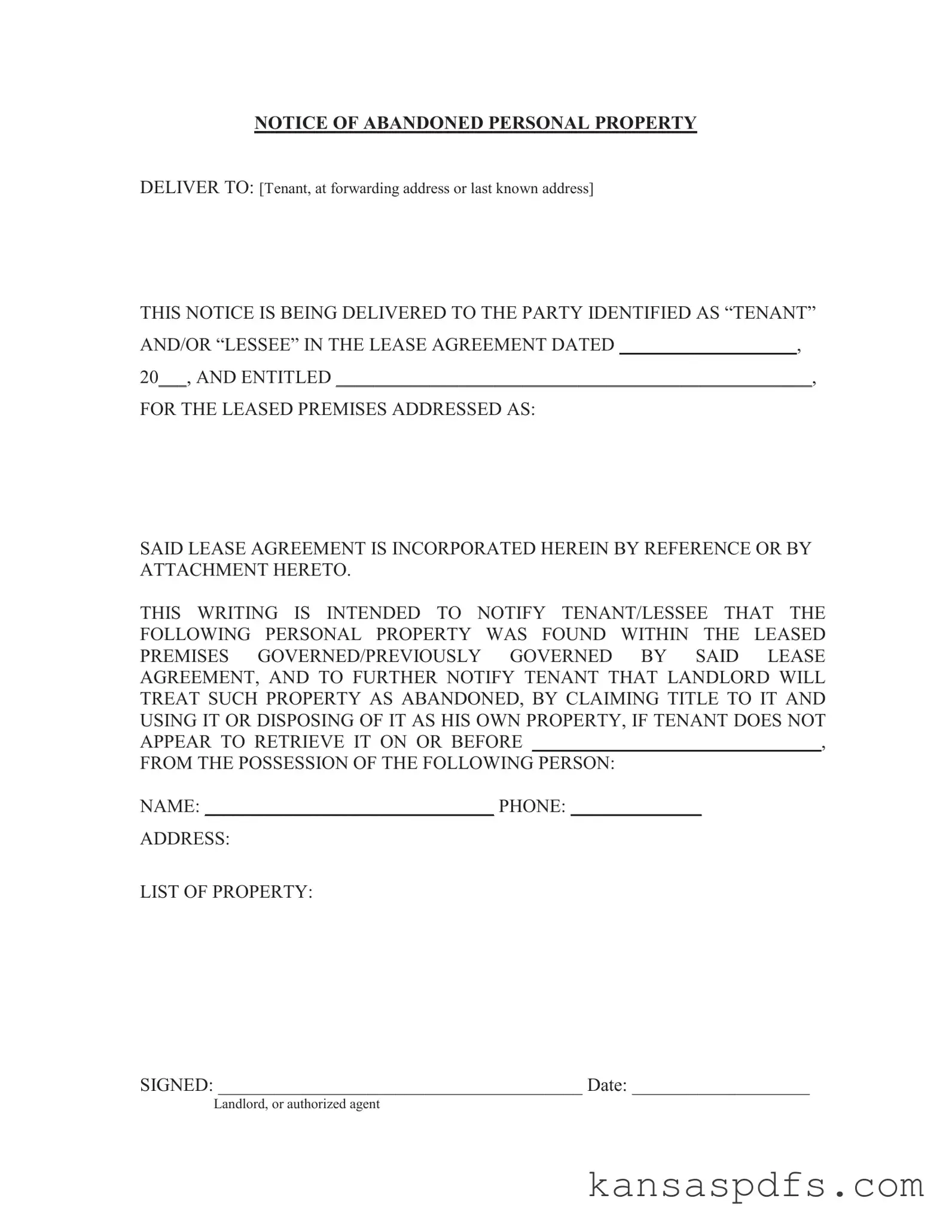What is the purpose of the Notice of Abandoned Personal Property in Kansas?
The Notice of Abandoned Personal Property is a formal declaration used by property owners or managers in Kansas. Its purpose is to inform the former tenant or property holder that their personal property has been considered abandoned after they have vacated the premises. It serves as a legal notice that the property owner intends to dispose of the items if not claimed within a specified period.
Who needs to send out a Notice of Abandoned Personal Property?
This notice must be issued by property owners, landlords, or property managers who find themselves with possessions left behind by tenants or occupants after the lease or rental agreement has ended. It is a crucial step for these parties to legally remove or dispose of the personal property left on the premises.
How is the Notice of Abandoned Personal Property delivered in Kansas?
In Kansas, the Notice of Abandoned Personal Property should be delivered to the former tenant or property owner either by personal delivery, certified mail, or by posting the notice on the premises if the whereabouts of the former occupant are unknown. This ensures that the notice is given in a manner that reasonably informs the former occupant of the abandoned property.
What information must be included in the Notice of Abandoned Personal Property?
The notice must clearly outline several important details, including a description of the abandoned items, the location where the items can be claimed, the date by which the items must be claimed, and what will happen to the items if not claimed by the deadline. It may also include contact information for the property owner or manager for the former tenant to get in touch.
What happens if the abandoned property is not claimed in Kansas?
If the abandoned personal property is not claimed by the specified deadline, Kansas law allows property owners or managers to proceed with disposing of the items. This may involve selling the items, discarding them, or donating them to charity, depending on the nature and condition of the property.
Is there a specific timeframe for claiming abandoned personal property in Kansas?
The Kansas statute does not prescribe a specific timeframe within which the former tenant or property owner must claim their abandoned personal property. However, the notice should specify a reasonable period, typically ranging from 15 to 30 days, giving ample time for the property to be claimed before disposal actions are taken.
